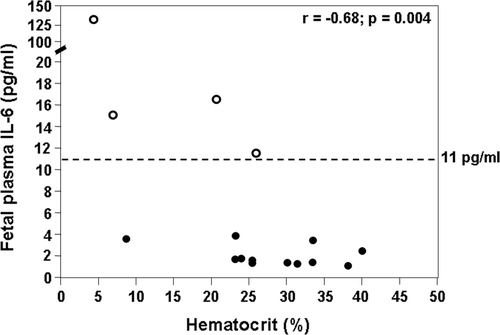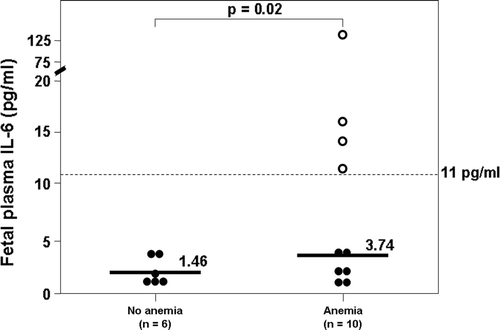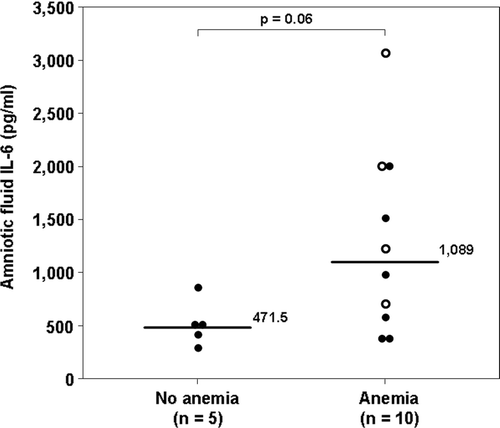Figures & data
Table I. Demographic and clinical characteristics of the study population.
Figure 1. Correlation between fetal hematocrit and plasma IL-6 concentration among 16 fetuses with Rh alloimmunization who underwent cordocentesis for suspected anemia. There was a significant negative correlation between the fetal hematocrit and plasma IL-6 concentration (Spearman's rho −0.68, p = 0.004). The interrupted line represents the cutoff value of IL-6 concentration for the diagnosis of FIRS. Four fetuses (‘empty’ dots) were diagnosed with FIRS.

Figure 2. Comparison of fetal plasma concentration of IL-6 between fetuses with anemia and those without anemia. The median fetal plasma IL-6 concentration was higher in fetuses with anemia than that of those without anemia (3.74 pg/ml, interquartile range (IQR) 1.79–14.7 vs. 1.46 pg/ml, IQR 1.18–2.63; p = 0.02). The interrupted line represents the cutoff value of IL-6 concentration for the diagnosis of FIRS. All fetuses with FIRS had anemia (‘empty’ dots).

Figure 3. Comparison of amniotic fluid concentration of IL-6 between fetuses with anemia and those without anemia. The median amniotic fluid IL-6 concentration was not significantly different between women with anemic fetuses and those with fetuses without anemia (anemia: 1089 pg/ml, interquartile range (IQR) 542–2009 vs. no anemia: 471.5 pg/ml, IQR 357–693; p = 0.06). Intra-amniotic inflammation was diagnosed in only one fetus with FIRS. The interrupted line represents the cutoff value of amniotic fluid IL-6 concentration for the diagnosis of intra-amniotic inflammation. The ‘empty’ dots represent fetuses with FIRS.
